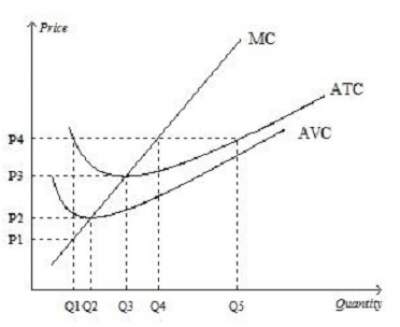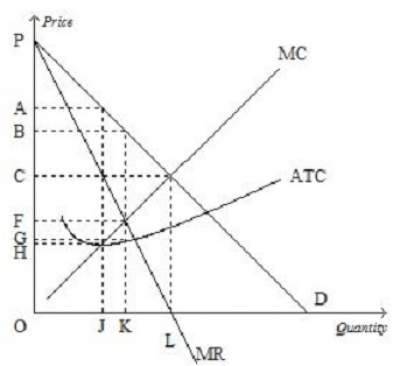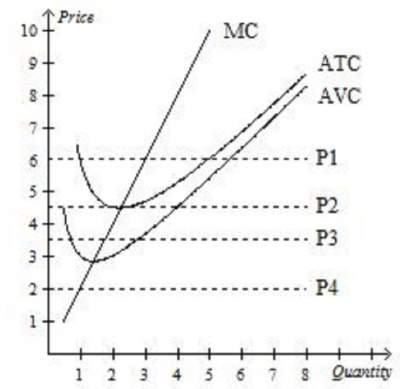Overall Practice Test-1 on Economics
Question 1: Economics deals primarily with the concept of ..........
- Money.
- Scarcity.
- Power.
- Banking.
- none of the above
Question 2: Which of the following statements is correct? .....
- A competitive firm is a price maker, whereas a monopolist is a price taker.
- Both a competitive firm and a monopolist are price makers.
- A competitive firm is a price taker, whereas a monopolist is a price maker.
- Both a competitive firm and a monopolist are price takers.
- 1 and 2
Question 3: In a market economy, supply and demand determine.............
- both the quantity of each good produced and the price at which it is sold
- the price at which each good is sold, but not the quantity of each good produced.
- neither the quantity of each good produced nor the price at which it is sold.
- the quantity of each good produced, but not the price at which it is sold.
- 1 and 4
Question 4: Which of the following is not a characteristic of a monopoly? ......
- one buyer
- barriers to entry.
- one seller.
- a product without close substitutes.
- 2 and 3
Question 5: When quantity demanded decreases at every possible price, we know that the demand curve has ......
- shifted to the right.
- shifted to the left.
- not shifted; rather, we have moved along the demand curve to a new point on the same curve.
- none of the above.
Question 6: The opportunity cost of going to college is .........
- the value of the best opportunity a student gives up to attend college.
- clothing, books, meals, transportation, tuition, lodging, and any other expenses.
- zero for students who are fortunate enough to have all of their college expenses paid by someone else.
- zero, since a college education will allow a student to earn a larger income after graduation.
Question 7: Which of the following statements is correct?
- Sellers determine both demand and supply.
- Buyers determine both demand and supply.
- Buyers determine demand and sellers determine supply.
- Buyers determine supply and sellers determine demand.
Question 8: Explicit costs
- include income that is forgone by the firm's owners.
- require an outlay of money by the firm.
- include all of the firm's opportunity costs.
- all of the above.
Question 9: Amy decides to open her own business and earns $75,000 in accounting profit the first year.
When deciding to open her own business, she turned down two separate job offers with annual salaries of $40,000, $50,000, and $60,000.
What is Amy's economic profit from running her own business?
- $35,000
- $20,000
- −$15,000
- $15,000
Assume that the table below shows the expenses of a local IT startup ABC.
| Q | TC | FC | VC | MC | AFC | AVC | ATC |
| 0 | $150 | $150 | $0 | .... | .... | .... | .... |
| 1 | $250 | A | B | C | D | E | F |
| 2 | G | H | I | $220 | J | K | L |
| 3 | M | N | O | P | Q | $220 | R |
Question 10: Find A.
- $150
- $100
- $75
- $45
Question 11: Using the same table of the company ABC, find G.
- $255
- $265
- $470
- $275
Question 12: Based on the graph below when price rises from P3 to P4, the firm finds that........

- fixed costs decrease as output increases from Q3 to Q4.
- it can earn a positive profit by increasing production to Q4.
- profit is still maximized at a production level of Q3
- average revenue exceeds marginal revenue at a production level of Q4
Question 13: Using the same figure in question 12, firms would be encouraged to enter this market for all prices that exceed .....
- P2
- P3
- P4
- P5
- none of the above
Question 14: The fundamental source of monopoly power is ............
- profit.
- barriers to entry.
- decreasing average total cost.
- a product without close substitutes.
Question 15: See the graph below and find the mathematical formula to calculate the monopolist's profit.

- (B − C) × J
- (A − G) × L
- (B − C) × K
- (B − G) × K
- none of the above
Question 16: A profit-maximizing monopoly's will produce an output equal to .......

- Q3
- Q1
- Q2
- Q4
Question 17: Which of the following pairs illustrates the two extreme examples of market structures?
- competition and monopoly
- competition and oligopoly
- monopoly and monopolistic competition
- oligopoly and monopolistic competition
For more details, please contact me here.
Date of last modification: 2019


